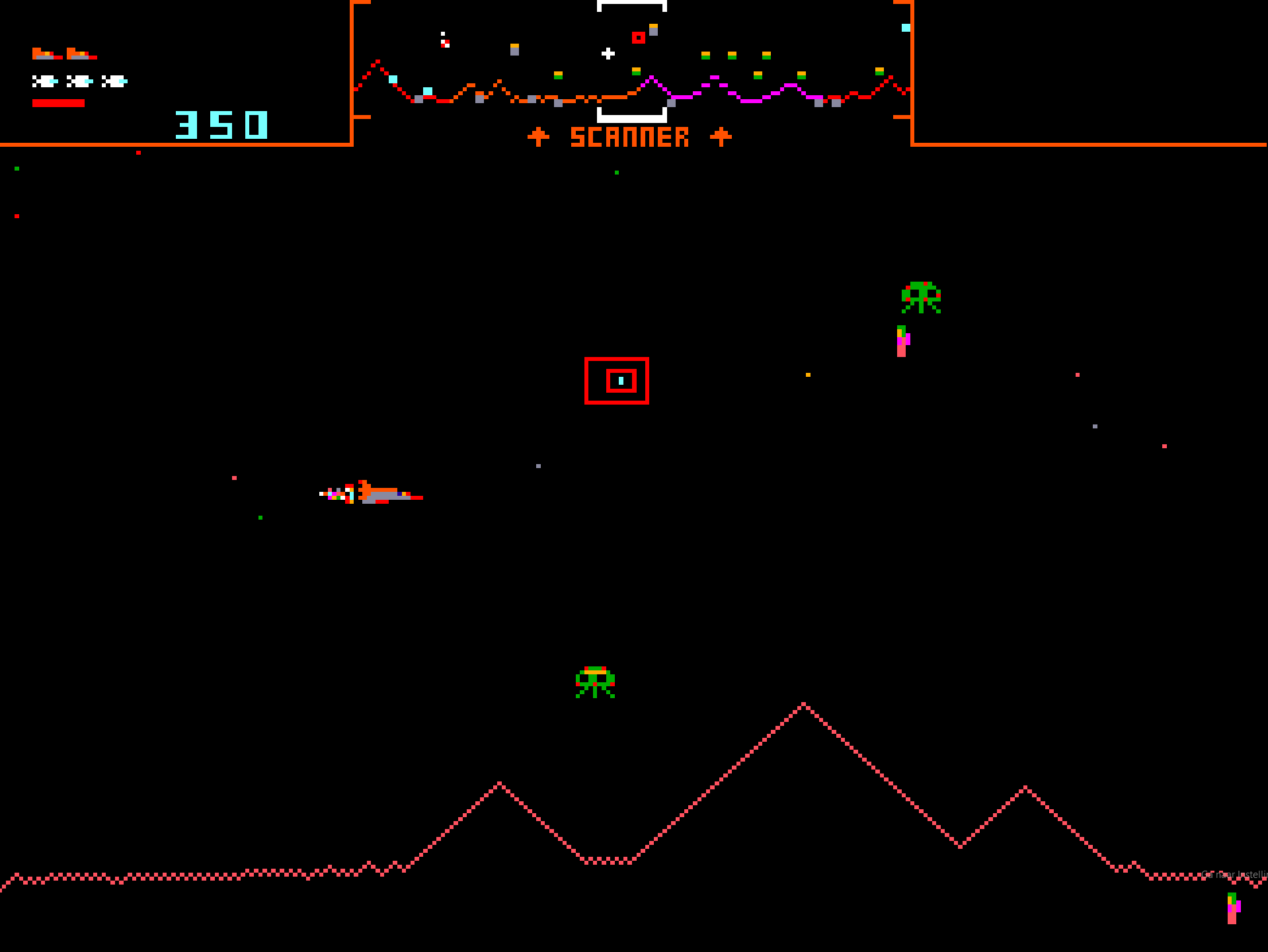Introduction
Released in 1981 by Williams Electronics, Stargate—also known as Defender II—is the official sequel to Defender, one of the most influential arcade shooters of all time. Building upon the core mechanics of its predecessor, Stargate introduces new enemies, gameplay depth, and a strategic “stargate” teleportation mechanic that raised the bar for horizontal shooters. Fast-paced, punishing, and technically impressive, Stargate became a cornerstone of early '80s arcade excellence.

Development and History
- Developer: Vid Kidz (Eugene Jarvis and Larry DeMar)
- Publisher: Williams Electronics
- Release Date: 1981
After the massive success of Defender, Eugene Jarvis and Larry DeMar formed their own development group, Vid Kidz, and immediately set out to create a follow-up. While maintaining the familiar controls and rescue-based gameplay, Stargate introduced more enemy types, smarter AI, and increased speed. The game was also a showcase for Williams’ advanced sound design and technical capabilities.

Gameplay Video
Gameplay and Mechanics
Core Gameplay
- Side-Scrolling Shooter: Players control a spacecraft tasked with defending humanoids from alien abduction.
- Teleportation: The titular stargate allows players to warp across the map or instantly rescue humanoids in danger.
- Precision Controls: Complex joystick-and-button layout includes thrust, reverse, fire, smart bomb, hyperspace, and inviso (temporary cloaking).
- Rescue Missions: Catch falling humanoids and return them to the ground before they perish.
- Wave Progression: Intense waves of enemies increase in complexity and speed.
New Features
- Inviso Power: Makes the player’s ship temporarily invisible and invulnerable.
- Yllabian Space Guppies, Dynamos, and Firebombers: New enemies add variety and challenge.
- Scoring Depth: Bonus points for saving all humanoids or using strategic teleports.

Cultural Impact and Legacy
- Hardcore Favorite: Known for its steep difficulty curve, Stargate earned a reputation as a game for elite arcade players.
- Technological Showcase: Its speed, sound effects, and layered enemy design were cutting-edge in 1981.
- Home Ports: Released on platforms like Atari 2600, Atari 8-bit, and later included in Midway compilations.
- Alternate Name: Renamed Defender II in some releases due to trademark issues or to reinforce its status as a direct sequel.
- Enduring Influence: Inspired countless side-scrolling shooters and remains a high-score favorite in retro tournaments.

Fun Facts
- Inviso’s Origin: The new cloaking ability was added to help players manage overwhelming enemy swarms.
- Speed Bump: The game runs faster than Defender, which made it more difficult even for experienced fans.
- Arcade Marketing: Williams marketed Stargate as “the next evolution in defender gameplay.”
- Easter Eggs: Some cabinets include hidden messages from the developers.

Conclusion
Stargate took the adrenaline-pumping chaos of Defender and turned it up to eleven. With new enemies, strategic teleportation, and even tighter controls, it was a game that demanded mastery—and rewarded those who stuck with it. To this day, Stargate is remembered not only as a worthy sequel, but as one of the most technically ambitious and brutally exciting shooters of its era.

